Minds On
Let’s get started!
Explore the following image and description of a playground.
How do the objects on the playground work?
How might someone set the objects in motion?
Record your ideas digitally, orally, or on paper. If possible, share your ideas with a partner.

A playground that has the following items: A flagpole with the Canadian flag, a swing set with two swings, a teeter-totter, a play structure with a ramp on one side and a rock wall on the other, a scooter resting against the play structure, a slide, a ball, a merry-go-round, a wheelbarrow, a sandbox with two shovels and a bucket, a red wagon, and one garbage can on wheels and one recycling can on wheels.
Action
What makes something move?
Any push or pull is a force.
Forces can put an object in motion or change an object’s position.
Some movements are caused by a push.
Some movements are caused by a pull.
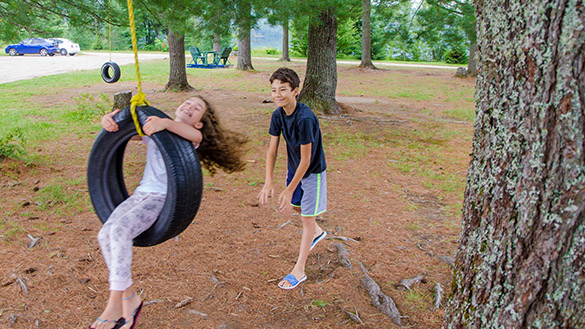
A push is away from you.

A pull is towards you.
Simple machines
Pushing and pulling can be a lot of work.
But playgrounds are filled with simple machines that make the work easier and fun!
Simple machines help people do work with less effort or force.
The simple machines are:
- the lever
- the pulley
- the inclined plane
- the wheel and axle
- the wedge
- the screw
Let’s explore how they work!
Press the following tabs to learn all about the six different simple machines.
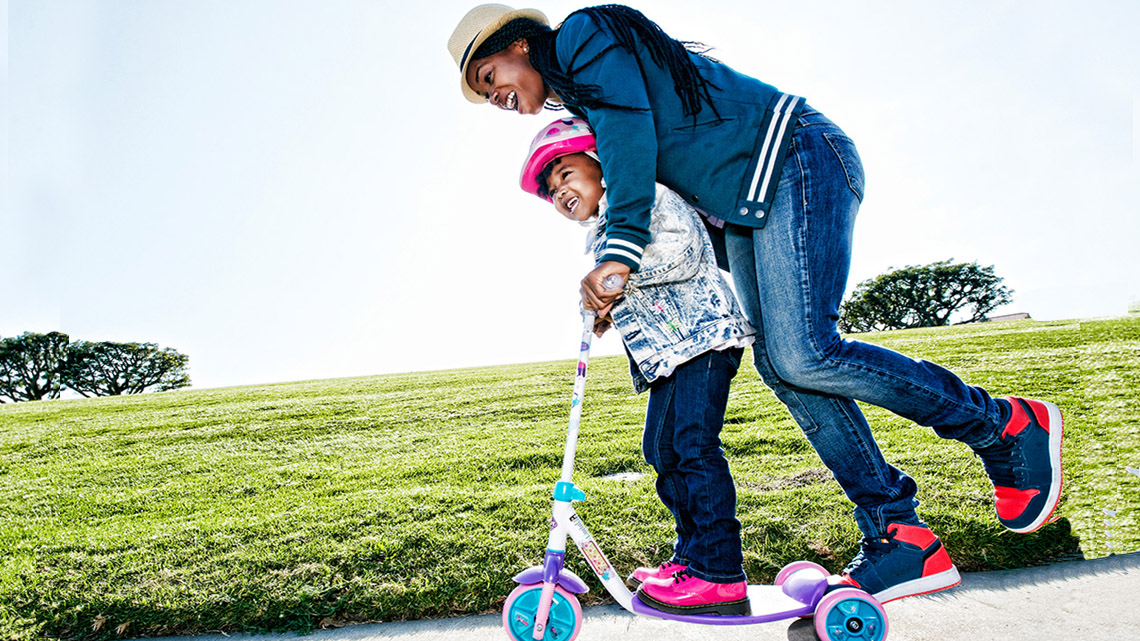
This scooter is a simple machine. It has wheels and axles. A wheel is what makes the scooter go round and round. An axle is a small rod or stick that goes through the wheel and helps move the wheel around. It can be long or short.
Explore the following animation. Do you notice the wheel? Do you notice the axle?
They are working together!
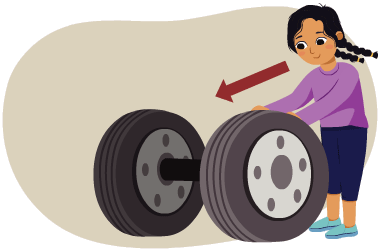 Description
Description
A learner is pushing one of two wheels that are attached to each end of an axle. An arrow shows she is pushing forward. The wheels move easily.
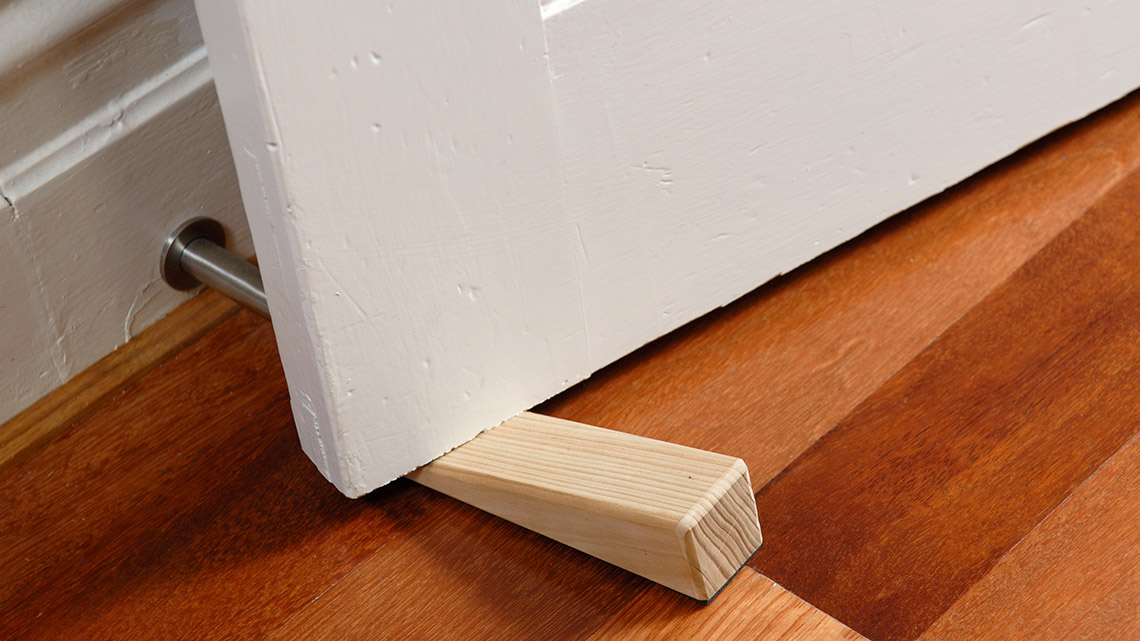
The doorstop is a simple machine. It is a wedge! A wedge has at least one side that is slanted. A wedge can hold something in its place or pull something apart.
Explore the animation. Do you notice a slanted side? Is the wedge pulling something apart or holding something in its place?
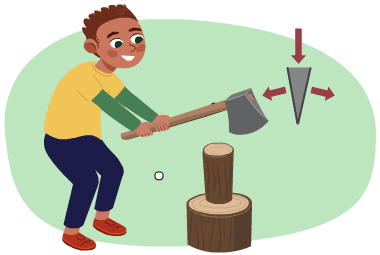 Description
Description
A person is using an axe to cut a log into two pieces. An arrow shows the downward direction of the axe. Two arrows, one to the right and one to the left, show the direction the chopped pieces of wood fall.
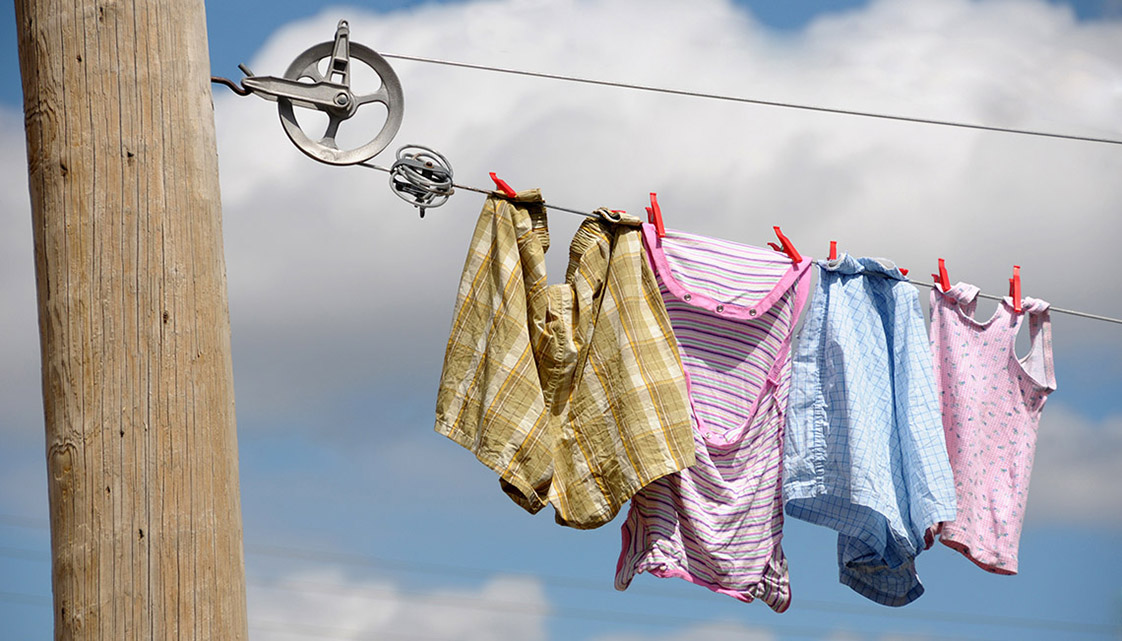
A clothesline is a simple machine. It is a pulley! A pulley uses a wheel and a rope to move and object. It can also pull an object up or pull it down.
Explore the animation. Do you notice the rope? Do you notice the wheel?
They are working together!
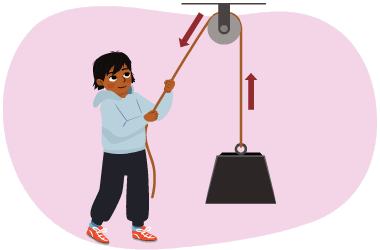
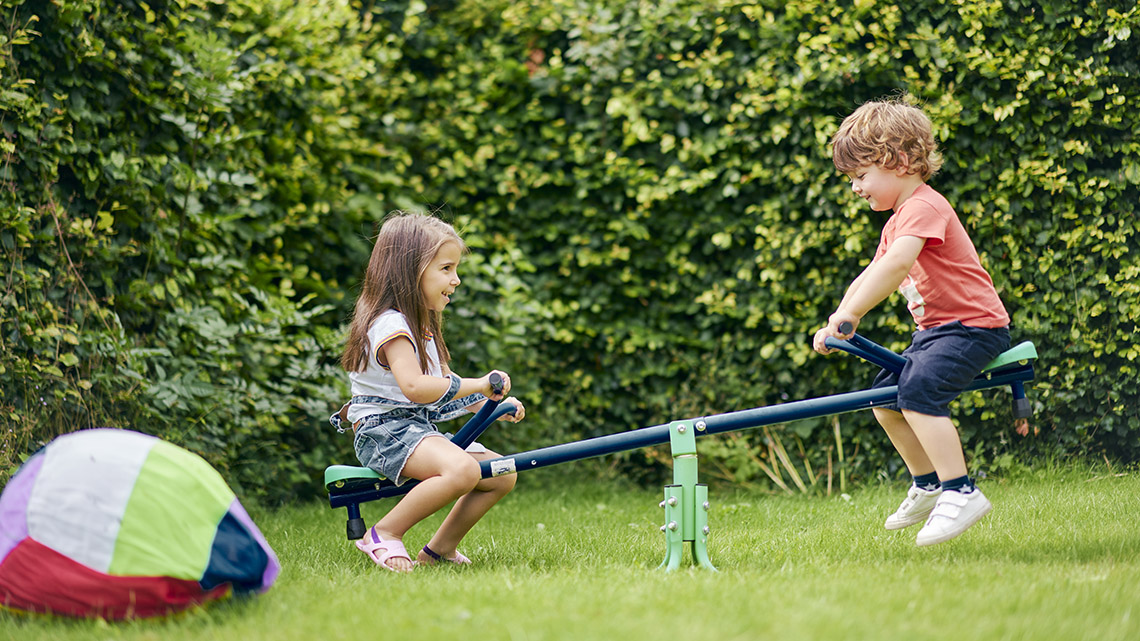
A teeter totter is a simple machine. It is a lever! A lever is a bar that has a piece in the middle of it. It’s called a fulcrum. It makes the bar move up and down.
Explore the animation. Do you notice the bar? Do you notice the fulcrum?
They are working together!

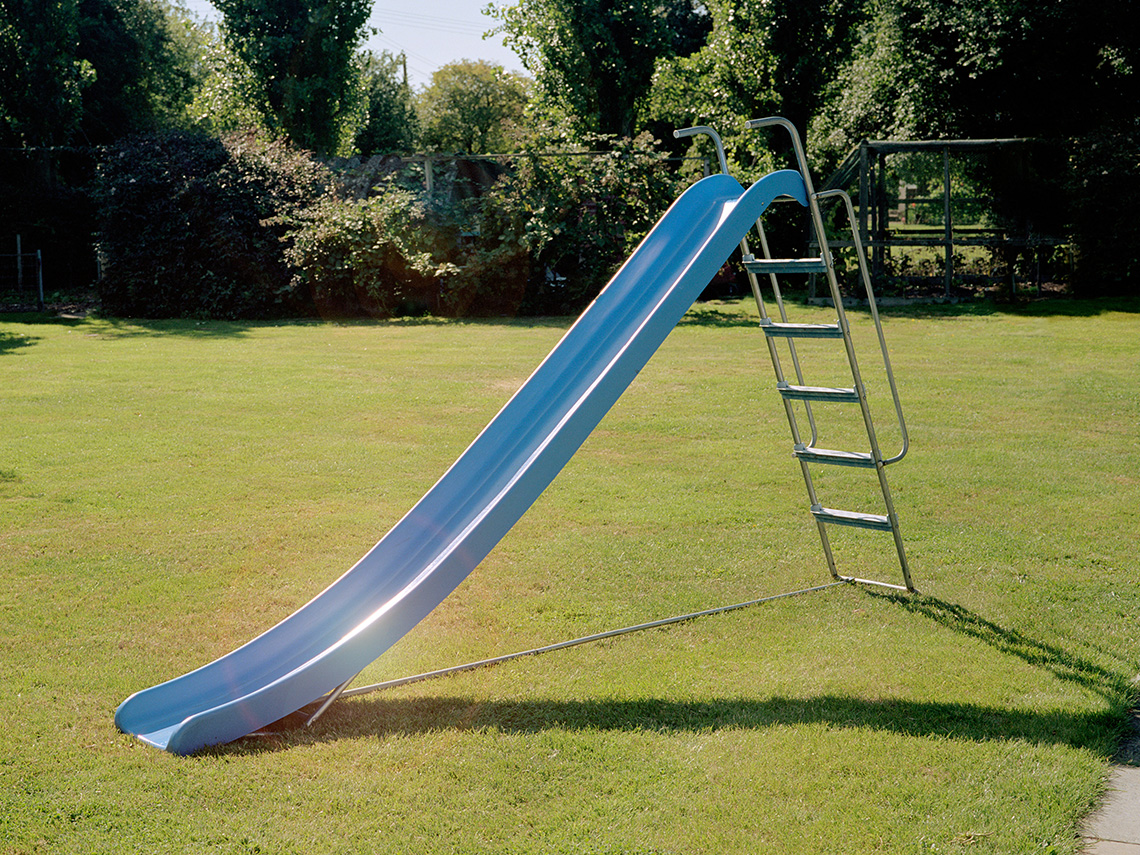
A slide is a simple machine. It is called an inclined plane! An inclined plane is a thing that is slanted which means it is not flat. There is a lower point and a higher point. This makes it easier to move something. A slide that was flat just wouldn’t work!
Explore the animation. Do you notice the inclined plane? Does it have a lower point? And a higher point?
This makes it easier to move something.


The water bottle cap is a simple machine. It is a screw! A screw holds things together. It has ridges around it called threads. The water bottle also has ridges around it and when you put the cap on, they match up. You can make a screw tighter by turning it one way and looser by turning it the other way.
Explore the animation. Do you notice the screw? How is it being turned?
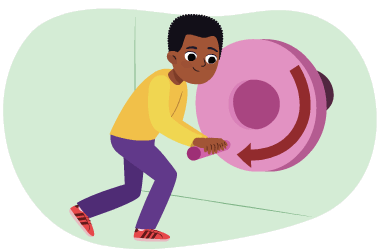
Let’s return to the playground to explore examples of different simple machines.

A playground that has the following items: A flagpole with the Canadian flag, a swing set with two swings, a teeter-totter, a play structure with a ramp on one side and a rock wall on the other, a scooter resting against the play structure, a slide, a ball, a merry-go-round, a wheelbarrow, a sandbox with two shovels and a bucket, a red wagon, and one garbage can on wheels and one recycling can on wheels.
Teeter-totter
A teeter-totter is a lever made up of a beam and a fulcrum.
Levers make it easier to move things that are heavy.
In the following video, the two people totter up and down easily.
Imagine trying to lift another person up without a lever.
It would be pretty challenging!
Explore the following video to check out a teeter-totter in action!
Wagon
A wagon is an example of a wheel and axle machine.
The axle is the rod that runs through the middle of the wheels. A wheel and axle machine helps people roll things instead of carrying them.
It can help people move each other around the playground.
Imagine someone trying to carry their friends around a playground without this simple machine!
Explore the following video to check out a wagon in action!
Simple machines on the playground
Identify simple machines on a playground.
For each simple machine select the corresponding image.
Pick one of the objects from the previous Matching activity and describe how it makes work easier.
Record your ideas digitally, orally, or on paper.
Compound machines
All machines are made up of one or more simple machines.
Machines that are made up of more than one simple machine are called compound machines.
The simple machines are:
- the lever
- the pulley
- the inclined plane
- the wheel and axle
- the wedge
- the screw
A wheelbarrow is made up of two simple machines, that make it easier to move things around.
The handles and the wheel work together to create a lever.

What is the other simple machine?
Press ‘Answer’ to learn what the other simple machine is.
The wheelbarrow also has a wheel and axle.
When someone lifts the handle of the wheelbarrow, the wheel and axle will start to turn and make it easier to move the load (whatever is inside the wheelbarrow).

Consolidation
Putting it all together
Match the following objects to the type of simple machine.
What are the parts?

Simple machines can make movement more fun!
Create your own labelled drawing of a machine.
Select a machine of your choice that uses that uses one or more simple machines to work.
You may also label the following machine.
Include the following information:
- name of machine
- types of simple machine(s)
- describe how this machine might make work easier
Complete the Simple Machines Organizer in your notebook or using the following fillable and printable document. If you would like, you can use speech-to-text or audio recording tools to record your thoughts.
 |
Press the ‘Activity’ button to access Simple Machines Organizer.
Reflection
How do you feel about what you have learned in this activity? Which of the next four sentences best matches how you are feeling about your learning? Press the button that is beside this sentence.
I feel…
Now, record your ideas about your feelings using a voice recorder, speech-to-text, or writing tool.